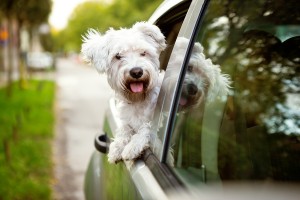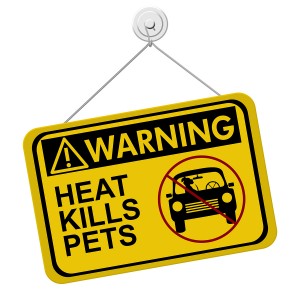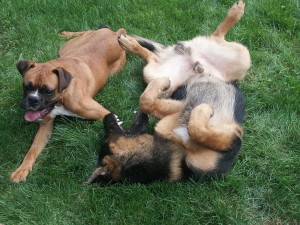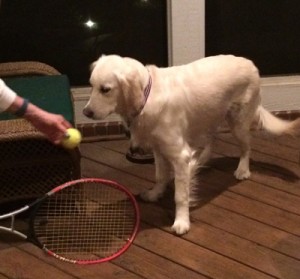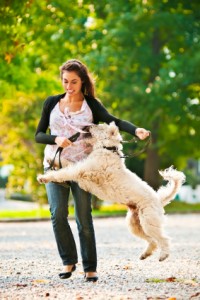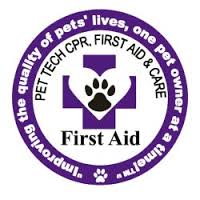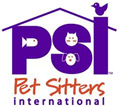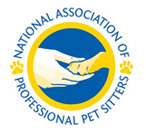What is a Pet Train?
Can Fido Run Free at the Ocean?
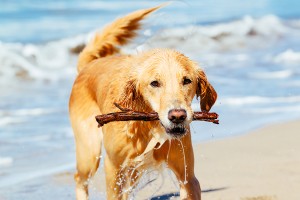 The BEACH! I didn’t know that dogs could go catch a wave in NC, yet it turns out there are a few dog-friendly a beaches! Most of them require pet owners to have a leash and be nearby, and their main issue concerns dog poop:
The BEACH! I didn’t know that dogs could go catch a wave in NC, yet it turns out there are a few dog-friendly a beaches! Most of them require pet owners to have a leash and be nearby, and their main issue concerns dog poop:
Owners are required to clean up after their pet while walking the beach. Violation of these pet regulations can result in a $250 fine for the first offense (up from just $25 in 2007)! It takes 4 weeks for animal waste (dog poop) to degrade, and that is more than enough time for bare-feet to accidentally step in it!
So, here is a list of NC beaches and their rules for when/where your dog can be off the leash:
1. Duck Beach (townofduck.com) is the only beach in North Carolina where dogs are allowed to run off-leash throughout the year.
2. Topsail Beach (topsailbeach.org) allows dogs on the beach throughout the year, though dogs must be on a leash from May 15 and September 30
3. Kitty Hawk (townofkittyhawk.org) requires dogs to be on a six-foot leash from 10 a.m and 6 p.m. between Memorial and Labor Day. Dogs may be taken off leash at all other times, so long as the animal stays under control and within 30 feet of its human guardian.
4. Kill Devil Hills (kdhnc.com), leashed dogs may access the beach year-round, though between May 15 and September 15, dogs may only visit the beach between 6 p.m. and 9 a.m. T
5. Sunset Beach (sunsetbeachnc.gov) allows leashed dogs on the beach at any time between Labor Day and the Friday before Memorial Day. During the summer months, leashed dogs may access the beach between 6 p.m. and 8 a.m.
6. Holden Beach (hbtownhall.com) limits leashed dog access to the beach to the hours of 5 p.m. and 9 a.m. from May 20 to September 10, though leashed animals may visit the beach at anytime the remainder of the year.
7. Kure Beach (townofkurebeach.org) and Wrightsville Beach (townofwrightsvillebeach.com) allow leashed dogs on beaches from October through March.
8. Carolina Beach (carolinabeach.org) allows leashed dogs from November through February.
- beware of loose fishing line that may tangle up your pet when they are swimming in the surf
- keep alert for rip-tide warnings and avoid areas with signs posted
- bring fresh water for your pet to drink as the salt water will make them extra thirsty
- respect other beach-goers and keep your distance
Sports for Dogs

The greatest joy for your pup could be AGILITY! These classes work with your pets energy level and natural abilities. The owner (handler) directs their dog through a course of obstacles, testing both owners teaching skills and dogs reaction time. “Competitors race against the clock as they direct their dogs to jump hurdles, scale ramps, burst through tunnels, traverse a see-saw and weave through a line of poles.” With scoring based on faults similar to equestrian show jumping, dog agility can be an exciting spectator sport!
Below are five local Raleigh centers that offer some form of Agility class for your beloved furry friend:
1. K9 Solutions
919-779-3813
Cost: $65
Duration: 3 weeks
Class size varies
http://nck9solutions.com/
This class focuses on using the built-in surroundings of a city for Agility equipment. We will be having your dog balance on walkways, climb statues and benches, jump over size-appropriate walls. As these classes take place in city areas, your dog will also learn to handle the hustle and bustle of their surroundings.
2. Teamworks Dog Training
919–855-0422
Once per week for 6 weeks
Cost: $130
Class Max: 6 Dogs
http://www.
Dogs must be reliable off-leash around other dogs and know directional control commands. Dogs should be familiar with targeting as a method of training. Dogs will be introduced to jumping technique and conditioning. Full sized obstacles will be introduced at less than the standard heights. This class can and should be repeated as needed until dog reaches class goals. This class is held outdoors in our fully-fenced and lighted regulation-sized covered arena.
3. Superior Dog Training
http://superiordogtraininginc.
Cost: $125
Duration: 6-weeks
Class Max: 5 dogs
Featuring: Treibball
Treibball, the newest competitive canine sport to come to the US, is an off-leash game requiring the dog to herd 8 exercise balls of varying sizes into a goal, acting on the handlers commands. Some of the benefits of Treibball include building a stronger bond and improving communication between you and your dog, enhancing off leash reliability and promoting independent thinking. Many people like treibball because it allows their high-energy dogs to get some serious mental and physical exercise, yet low impact.
4. Thunderpawz
4325 Grassy Field Dr, Raleigh, NC 27610.
http://thunderpawz.com/
919-741-9434
Cost: Negotiated after first evaluation (free)
Class size: one-on-one
Realizing that not all agility teams are the same, we strive to help handlers create a training program that is custom-tailored to the needs of the team. Our broad range of experience allows us to facilitate handlers of all levels of competition by setting attainable and manageable goals. Lessons are conducted at our home-based training field. We generally plan for a lesson with one dog to be an hour long. Your dog typically will not be working the entire time, but you and your dog will come away from our lessons with a sense of accomplishment and that you learned something useful.
5. Town and Country
http://www.tcanimalcare.com/
Cost: $125
Duration: 6-weeks
919-387-7833
AGILITY
Level 1: This class introduces dogs to all obstacles and the basics of this exciting sport in which dogs run an obstacle course. Most work is done on-leash so off-lead control is not required at this stage.
Level 2: Agility (Prerequisite – Intro to Agility):
In this class, dogs begin much more challenging sequences and work on mastering six weave poles and the teeter, and they are introduced to crosses and other handling maneuvers. To participate in this class, dogs must be comfortable on all the equipment, including full-height A-frame and dog walk.
Level 3: Agility (Prerequisite – Level 2 Agility):
Dogs are introduced to more advanced handling techniques, and begin running novice-level courses in preparation for competition. Dogs participating in the Level 3 Agility class must have mastered six-weave poles and the teeter.
Competition Agility: (Prerequisite – Level 3 Agility):
This class is designed for dogs that are ready to compete or are competing. Participants work on handling difficult courses, solving problems and improving handling techniques. To participate in this class, dogs must excel in off-lead control.
![]()
Medicines vs. Natural Remedies for What Ails Your Dog
Does your dog need a drug to fix what ails him? Or would an all-natural remedy work just as well? There are two sides to every coin, so depending on the way you fall in your beliefs, both options are offered below for the top five most common ailments among our furry best friend – the dog.
For Arthritis:
Meds:
1. Rimadyl
2. Novox (generic equivalent of Rimadyl) non-steroidal anti-inflammatory (NSAID) used to treat pain and inflammation
All Natural:
1. Compare to the natural remedies of Green-Lipped Mussel (ewwww) or
2. Glucosamine sulfate “helps rehabilitate damaged cartilage by stimulating the production of glycosaminoglycans (GAGs) and chondroitin sulfate, the essential component of cartilage. Glucosamine has also been shown to have anti-inflammatory activity.”-Homeopathy Works.
For Upset Stomach:
Meds:
1. Immodium A/D (loperamide)
2. Pedialyte
3. Pepto/Bismol
All Natural:
1. Bland diet of rice and white chicken
For example: offer 75% of a the rice bland diet with 25% of the dog’s regular kibble and give it for three days. If the does well, then offer half rice diet and half dog kibble in a 50-50 mixture for another three days.
2. Banana Baby Food
3. Probiotics – Prostora made by Iams , Proviable made from Nutramax Labs and Fortiflora made from Purina.
For Diarrhea:
Meds:
1. Immodium A/D (loperamide)
2. Pepto/Bismol (carefully measure correct dosage – may cause side effects such as darkening of tongue or stool
All Natural:
1. plain yogurt or cottage cheese – Probiotics such as Fortiflora or Culturelle may be also helpful to promote the growth of good bacteria
2. Fast the dog. This will give his gastro-intestinal tract some rest and time to recover (24-hour fast)
3. Unflavored Pedialyte to help replace lost electrolytes – keep the dog hydrated
For Constipation:
Meds:
1. Lax-eze
2. Lactulose Solution for Dogs and Cats (Hi-Tech Pharmacal)
All Natural:
1. Ground dark green leafy veggies: 1 teaspoon per 10 pounds of body weight 1-2 times daily with food
2. Canned 100 percent pumpkin: 1 teaspoon per 10 pounds of body weight 1-2 times daily on food
3. Organic Apple Cider Vinegar unfiltered (ACV), 1/4 teaspoon per 10 pounds of body weight added to your dog’s food 1-2 times daily.
For Hot Spots:
(most commonly around the ears and flank regions from excessive biting/licking)
Meds:
1. Betagen
2. Genesis Topical Spray
3. Sulfodene Skin Medication for Dogs 4
All Natural:
1. Be Soothed. Tea Tree Oil
2. HomeoPet Hot Spots
Hot Diggity Dog!
Many pet owners take their dogs with them to the gas station or fast food joints and leave them in the car for “just 10 minutes.” In the summer, this mistake in judgment can be fatal. Even on a cloudy day, the temperature can rise drastically in mere minutes.
“On a 78-degree day, the temperature inside a parked car can soar to between 100 and 120 degrees in just minutes, and on a 90-degree day, the interior temperature can reach as high as 160 degrees in less than 10 minutes” -RedRover.
Contrary to popular belief, keeping the windows cracked open barely slows the rapid rise in temperature! The lack of shade and added heat coming off parking lot pavement speeds up the heating process in a car.
This summer when you’re out shopping, if you notice a panting dog in a car “take down the car’s color, model, make, and license plate number. Have the owner paged in the nearest buildings, or call local humane authorities or police. Have someone keep an eye on the dog and be your witness if you need to break the car window to save the animals life. Stay with the animal until authorities arrive.” – PETA.
Signs of heatstroke:
Excessive thirst, thick saliva, heavy panting, lack of coordination. lethargy, lack of appetite, dark tongue, rapid heartbeat, fever, vomiting, bloody diarrhea and loss of consciousness.
At particular risk: Long-haired dogs in warmer climates should be trimmed short. Bulldogs and pugs often have small tracheas and long soft palates, which decrease their ability to cool themselves. Senior dogs and young pups are even more susceptible to heatstroke.
As a responsible pet owner, try to leave pets at home or with a pet-sitter when you travel. Don’t be like the tourist parked at the Washington DC Holocaust memorial. He was arrested on animal cruelty charges after pedestrians got police to open his minivan. His two dogs had been inside the vehicle for an hour, barking to get out, and suffered severe heatstroke. The smaller chihuahua died.
Ways to bring down the animals temperature: 
1. Applying cool, wet towels on the stomach, chest, groin and paws but do not to use ice
2. Get the pet to an air-conditioned car
3. Place dog in front of fan
4. Immerse in a tub of cool but not cold water
5. Help them drink small amounts of cool water
Just this month, a Wake Forrest woman left her two dogs in the car while she went shopping at Walmart. It was 84 degrees outside and she cracked her windows. Two hours later, pedestrians noticed the barking, panting dogs locked inside and called police. By the time they arrived, both dogs were dead. Their owner had been shopping for three hours. When she came out, she was charged with Animal Cruelty. Last year, it was a Carrborro woman that left a service dog in the car on a stormy day for two hours. It died when interior temperature reached 124 degrees!
Remember, no matter the weather, never leave your dog unattended in a car for more than 10 minutes. You don’t want a hot dog, so be cool and leave them at home!
Early Spay / Neuter is Very Controversial
“Over the decades, as animal sheltering has increased in visibility and animal rescue has become more popular, spay/neuter has hardened into an almost militant social policy.”-Whole Dog Journal
Early neutering is a controversial topic. After reading over 30 articles and numerous blogs from veterinarians, I have summarized the Pros and Cons identified in the last few years. For every article against early neutering, there is another for it. and both sides support their cases with facts. The choice is really an individual one, depending on the pet breed and whether you plan to continue the lineage of a showdog.
Early Neutering Debate:
PROS
1. Less Obesity
2. Less aggressive
3. Less likely to have “male” behaviors: fighting, jumping a fence, or getting hit by a car.
4. Less chance of Testicular Cancer
CONS of not neutering
1. Higher chance of Cancer and joint problems.
“ Both the joint problems and the cancers that they have linked are relatively common in large-boned dogs, so the challenge is to prove whether the early neuter actually caused an increase in the incidence. There have been no studies that prove this.” -American Kennel Society.
2. Higher chance of CCL rupture (Canine cruciate ligament) in neutered dogs
“For years the veterinary community has been aware that early-spay and neuter may impact orthopedic health in dogs. Through a very detailed analysis and inclusion of body condition score as a risk factor, Dr. Hart was able to show that timing of spay and neuter does indeed have health implications,” said Dr. Shila Nordone, Chief Scientific Officer for the AKC Canine Health Foundation
3. Slightly longer legs and less “masculine” muscle development
4. Possible endocrine problems:
“Dr. Becker noticed many of her canine patients were developing endocrine-related disorders. After a conversation with an expert in the field of veterinary endocrinology, Dr. Becker realized her practice of insisting on early spays or neuters for every dog patient had left many of them with serious health problems.” – Healthy Pets.com
5. Scientific evidence is mounting that gonad removal can deliver serious consequences to a dog’s future health. Among those consequences: shortened lifespan, atypical Cushing’s disease, cardiac tumors, bone cancer, abnormal bone growth and development, CCL ruptures, and hip dysplasia.
Early Spaying Debate:
PROS
1. Spaying females before 6 months is less controversial than neutering; preventing the first heat nearly eliminates the risk of breast cancer which is much more common than bone cancer.
2. Spayed dogs no longer experience the hormonal changes during heat cycles that turn your pet into a nervous dog that cries incessantly and attracts unwanted male dogs.
3. Prevention of Pyometra, a “uterine disease that occurs most often in intact female dogs six years or older that have never been pregnant. Pyometra is a hormonal abnormality with or without the presence of a secondary bacterial infection.” – Universityvet.com
CONS to spaying early
1. Missing female hormones.
2. Delayed Closure of Growth Plates.
Females “spayed at 7 weeks had significantly delayed closure of growth plates as compared to those spayed at 7 months, and those spayed at 7 months had significantly delayed closure of growth plates as compared to those left intact”. – Canine Athlete.com
One question owners should ask: “Is there an alternative procedure that can be done so that my pet is fixed but not losing its sexual gonads with the important hormones they secrete. That’s a whole different Blog…
References:
“Neutering Dogs: Effects on Joint Disorders and Cancers in Golden Retrievers” http://www.akcchf.org/news-
http://healthypets.mercola.
http://www.cesarsway.com/
http://www.caninesports.com/
http://www.whole-dog-journal.
http://www.universityvet.com/
The Low-Down On Triangle Dog Parks
Does your dog enjoy frolicking with other dogs?
Does he want to greet every pooch that comes his way?
Then it may be time to discover one of the Triangle’s Dog Parks.
Key things to consider about your dog before you go:
1. His temperament (does he get along well with others? Tolerate all sizes and energy levels)?
2. His eating habits (if he enjoys eating poop then you will have to be vigilante)
3. His vaccination records (is he up to date on Rabies, Bordetella, etc)?
Also note, not all dog parks are free and some require you to pick up a permit/pass ahead of time.
TRIANGLE DOG PARKS AND AMENITIES:
CARY (1 Park)
Cary Gobold Dog Park
2050 NW Maynard Rd
Cary, NC 27513
(919) 469-9142
*Fee: $40 for Cary residents (1 dog only) and $80 for non-Cary residents
Not open to general public. Must have dog registered with Town of Cary. Registered pass allows entry through electronic gate.
Hours: 7 am to 10 pm 7 days/week
Amenities: Five-foot high chain link fence with screening, paved entrance & electronic gate
Lighted areas for small dogs and for large dogs
Wood chips for ground cover
Benches
Water stations
Information kiosk
Pet cleanup areas
CHAPEL HILL (2 Parks)
Homestead Dog Park
100 Northern Park Drive
(919) 968-2787
Hours: Daily, dawn to dusk
*No Fee
Amenities: Very large 20,000 square foot, high fence, water stations, benches, large rocks for dogs to play on
Southern Community Park
1000 Dogwood Acres Drive
Chapel Hill, NC 27516
Amenities: 2 acres, separate small and large dog areas, benches, water
DURHAM (4 Parks)
Durham Dog Park
400 Cleveland St
Durham, NC, US 27701
(919) 560-4355
Fees: Annual registration. Residents: $17
Non-City Residents: $22
Multiple Dog Discount: $2 off fee for second (and each additional) dog
Amenities: Water, Benches, Waste Bag Dispenser
This fenced, off-leash dog park is one of the largest in the area. Four separate areas for small dogs, large dogs, and training and obedience.
Downtown Durham Dog Park
A “paw-ket” park located at the corner of Roxboro and Elliott streets.
*Separate areas for small and large dogs
*No Fee, open to public
Amenities: Benches, Waste Bag Dispenser, Water
*Please note, this park is maintained by the local neighborhood.
North Gate Dog Park
Address: 400 W Lavender Ave, Durham, NC 27704
Phone:(919) 560-4355
Amenities: water spigots, both small and large dog play area
Pineywood Park
400 E. Woodcroft Pkwy
Durham, NC 27
*No Fee, open to all
Amenities: 3 Acres of play space, Benches, Waste Bag Dispenser, Water
Has separate small dog park (under 30 lbs)
RALEIGH (3 Parks)
Carolina Pines Dog Park
2305 Lake Wheeler Road
Raleigh, NC 27603
http://www.
*No Fee, open to public
Hours: Sunrise to Sunset 7 days/week
Amenities:Water available, picnic tables, *Almost entirely shaded, large area
Three separate areas: Large dog park, Small dog park , and a training area where the Wake County SPCA will do training.
Millbrook Dog Park
1905 Spring Forest Rd,
Raleigh, NC 27615
(919) 872-4156
http://www.millbrook-dog-park.
Hours: Sunrise – 10 pm 7 days/week
Oakwood Dog Park
910 Brookside Drive
Raleigh, NC 27604
http://www.oakwooddogpark.com/
**Free to the public (sunrise to sundown)
Both small and large dog play area
Hours: Sunrise to Sunset 7 days/week
Tennis For Dogs
Today was sunny with a light breeze and I headed out with my owner for a few games of tennis.
Now, I have an important role and it’s called “Retriever”.
Anyone with a medium to large sized dog can play this version:
Step 1: Owners hit the tennis ball back and forth inside the gate and you follow it with your eyes (great neck exercise) outside the gate.
Step 2: When the yellow tennis ball goes outside the court, you must hunt it down (mental challenge and nose exercise)
Step 3: Grab ball in mouth and carry back to tennis court (strengthening jaw/neck muscles)
Step 4: Occasionally, I find a mystery ball that doesn’t have my owners scent. This one is called a “keeper” and I get to keep it all to myself!!
For dog owners everywhere, there is a great toy that accompanies tennis balls and makes it easier to reach down, scoop it up, and throw it farther: Chuckit! Sport Launcher found in most pet stores and on-line.
There is also a website for affordable bulk dog tennis balls that don’t have wool so I will not get hairballs: Pet Tennis Balls
Do you need a pet sitter in the Raleigh, Cary Apex, NC area?
We would be honored to be your fur baby’s sitter or dog walker and we love to play games and throw balls.
Call Four Paws Pet Sitting Services! 919- 388-PAWS
How To Get Your Pooch To Stop Jumping On People
Why do dogs jump up on people? If it is a visitor, they are curious and want to smell who has come into their space. If it is their owner, they are excited and want to greet you.
As pack leader of your household, you will need to consistently check your dog, moving them away from guests into a sitting position until the dog calms down . Using a leash reinforces not being able to jump-up by controlling their movement.
“As humans, the strongest scents we project comes from our genital areas and from our mouths. We’ve all had the experience of a less-than-well-mannered dog sniffing our crotch areas – though within the dog world, sniffing genitals is good manners! Since we tend to cover our genital areas with clothes, the next strongest scent for a dog to check out is coming from our mouths…. this will make dogs want to jump up to get closer to our faces and find out what’s going on there, ” Cesar Millan.
Make sure that the consequence of your dog sitting down is that you come over and praise them, giving affection. Conversely, the consequence of your dog coming over and jumping up is that you move away and ignore them.
1. With Visitors:
Management behavior training: putting your dog on a leash every time there is a visitor so that you control their ability to jump up. They can’t practice this bad behavior, so they learn that if they sit, the person will still come over and give them attention.
Turning your back and greet them when they calm down.
Let the dog say hello for 3-5 seconds, then gently pull them back and reward calmly with a treat.
Good behavior equals saying hello to guest, bad behavior equals moving away from a guest.
It may take 4-6 weeks of consistently repeating this controlled greeting.
2. With owner:
Alternate behavior training: When you see that your dog is ready to launch up at you, turn your body away from him, stand straight and do not look at him. Then, give him something else to do with a command of: “Sit.” This is asserting dog obedience, leader of the pack behavior on your part. At the very least, it deflects him off you. During this process don’t make any eye contact with your dog and don’t say a thing. Ignore your dog and make it clear to him that when he jumps he gets nothing from you.
When your dog has settled down and stops jumping, you then initiate contact with him. Get down to his level and lavish him with praise and back scratch. If you are consistent, your dog will learn the new behavior.
It will take frequent practice to perfect the proper greeting routine, and may require you to leave through one door ( back or garage doors) and return through the front door over and over again.
Decorate Your Home, But Pet Owners Beware!

Ornamental plants are a great way to dress up the house during the holidays. Pet owners should be aware however, that many of these common plants are poisonous to pets.
Toxicity ranges from mild to severe, and the amount of plant consumed determines how sick a pet may become. In general, gastrointestinal upset is the most common symptom, but if enough plant material is ingested, symptoms can be more severe and a veterinarian may need to be consulted. Naturally curious puppies and kittens are most often at greatest risk for plant poisonings.
Poinsettia Plant
Many people associate the Poinsettia plant with extreme toxicity, but this is not true. The sap of Poinsettias is considered to be mildly toxic, and may cause nausea or vomiting if ingested, but not death.
Mistletoe and Holly
A couple of holiday plants, specifically Mistletoe and Holly are considered to be moderately to severely toxic, and you should call your veterinarian or poison control center immediately for specific advice.
Lilies and Daffodils
Additionally, plant bulb kits featuring Amaryllis and other plants in the lily family, are popular gift items at this time of year. Pet owners should be aware that these plants are extremely toxic for cats, sometimes with severe symptoms. Daffodils are toxic to both dogs and cats, especially the bulbs.
Christmas Tree
Don’t forget about the Christmas tree. Christmas trees are considered to be mildly toxic. The fir tree oils can be irritating to the mouth and stomach. The tree needles are not easily digested, possibly causing GI irritation. The amount of trouble depends on how much is consumed.
Stay Safe/ Watch Your Plants and Your Pets
Monitor your pet’s interest in the plants. To be 100% safe, do not bring toxic live plants into your home. If unsure about a plant, look it up to check for toxicity. Monitor your pet’s interest in eating plants, and place plants out of reach.
